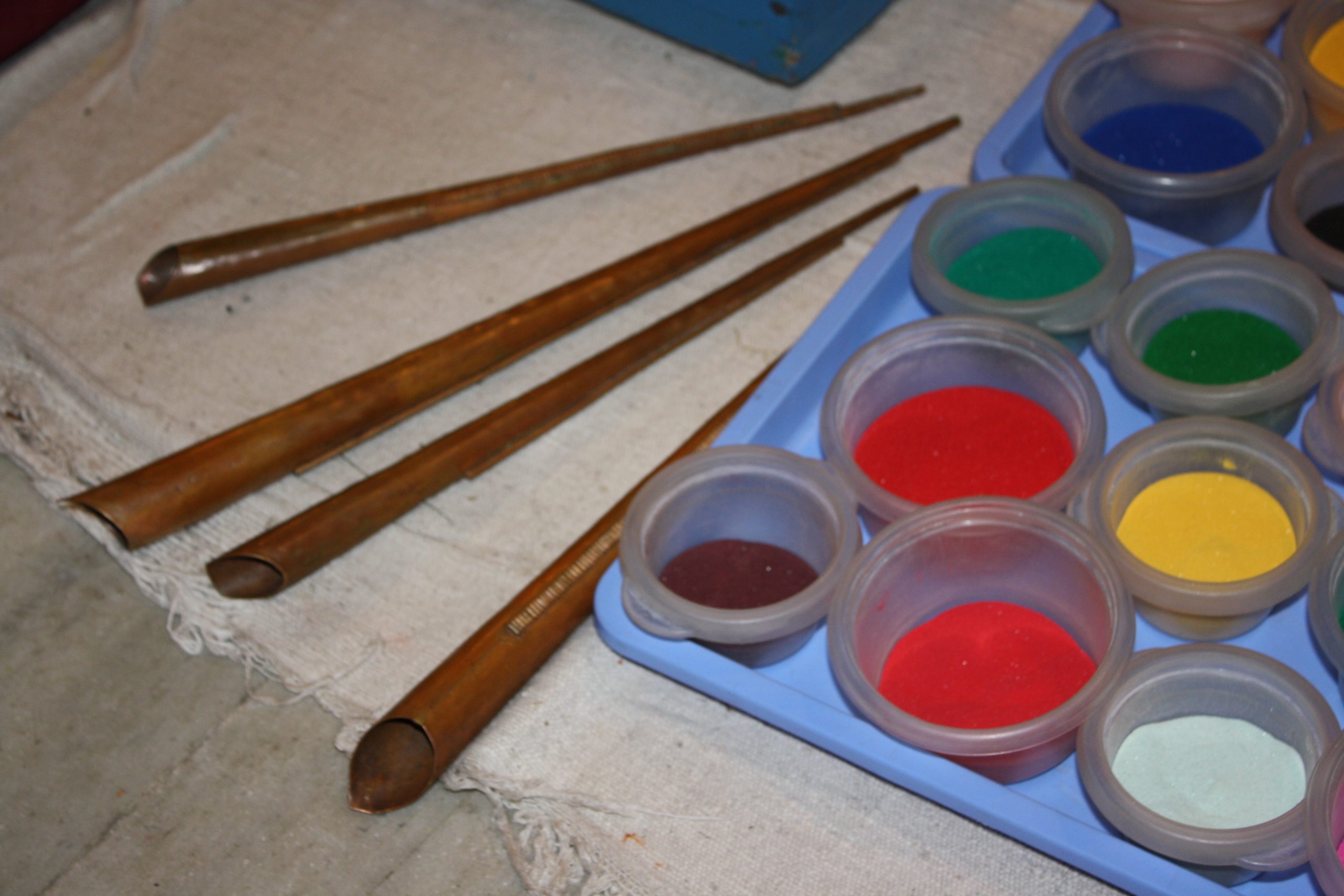Recently I watched Buddhist monks labor over a sand mandala meant to celebrate the deity Green Tara, who embodies the feminine characteristic of compassion.
A mandala’s elaborate overall design is traditional, yet unique to the site and the situation in detail. Rendering one in sand involves carefully applying grains from the mouth of a narrow funnel called a jamphur. Rubbing the side of a full jamphur with an empty one generates a controlled vibration that dispenses the brightly colored sand, a few grains at a time. The sound of the jamphurs in action builds and fades like the buzz of cicadas.

Loaded with pigment, each of the hollow tools, when tapped or scraped, releases its contents precisely.
The sand mandala that I saw under construction was the product of scores of monk-hours over the course of a week. The intricate display was destined to be erased when finished, its mingled sands ceremoniously strewn onto the nearby Wisconsin River in recognition of the impermanence of life.

Note the texture of the white border, like icing piped onto a cake. Notice too how uniform the layer of green sand appears.
As an artist, I was not surprised that it pained me to consider the fate of this beautiful work of art. I’d be tempted to try to preserve it.
Compassion is fine, of course, but being nonreligious, I think the act of destroying what had been so painstakingly assembled says much more about the humility of sacrificed ownership.
For many of us, this is an unobtainable ideal.

